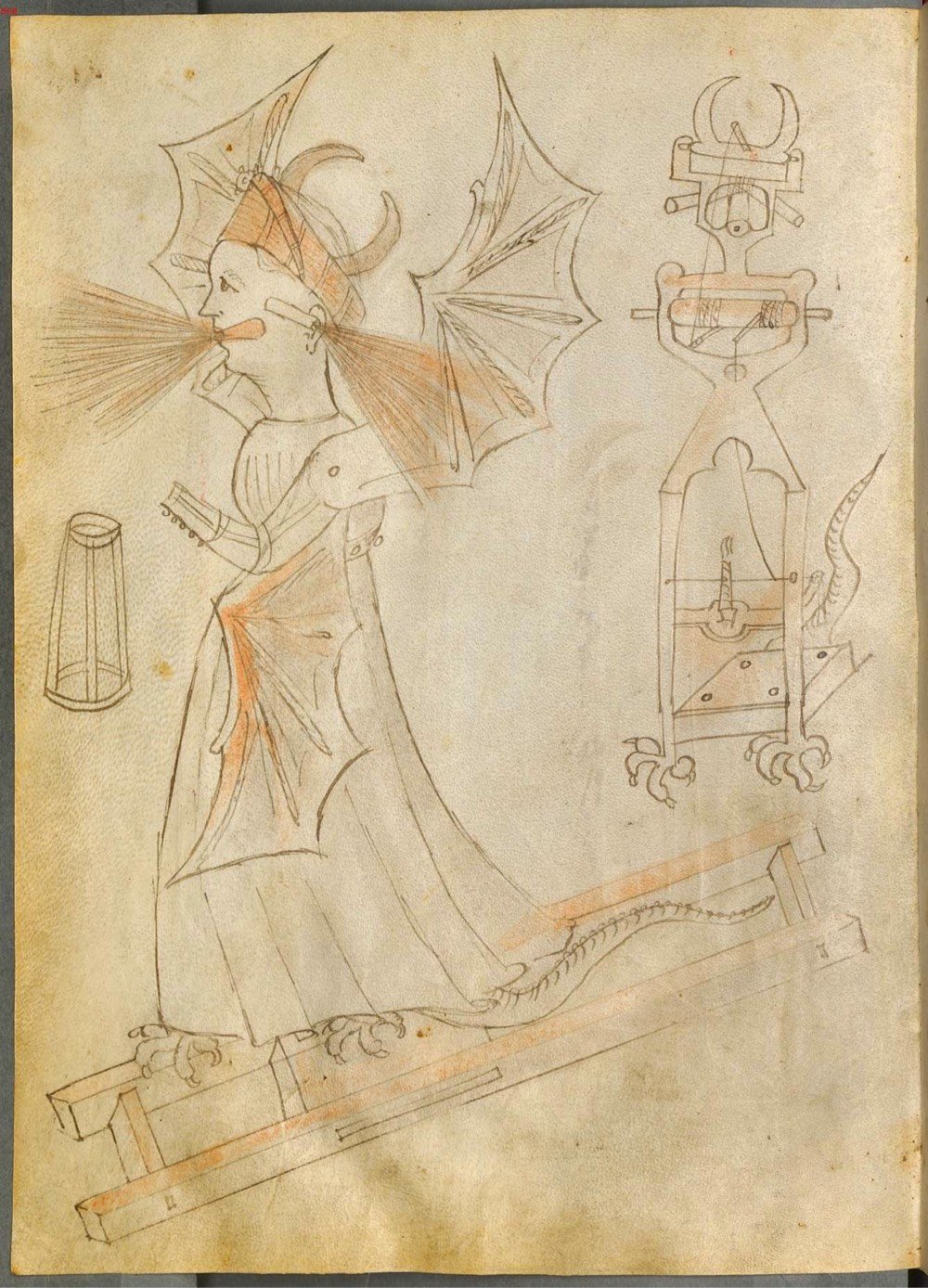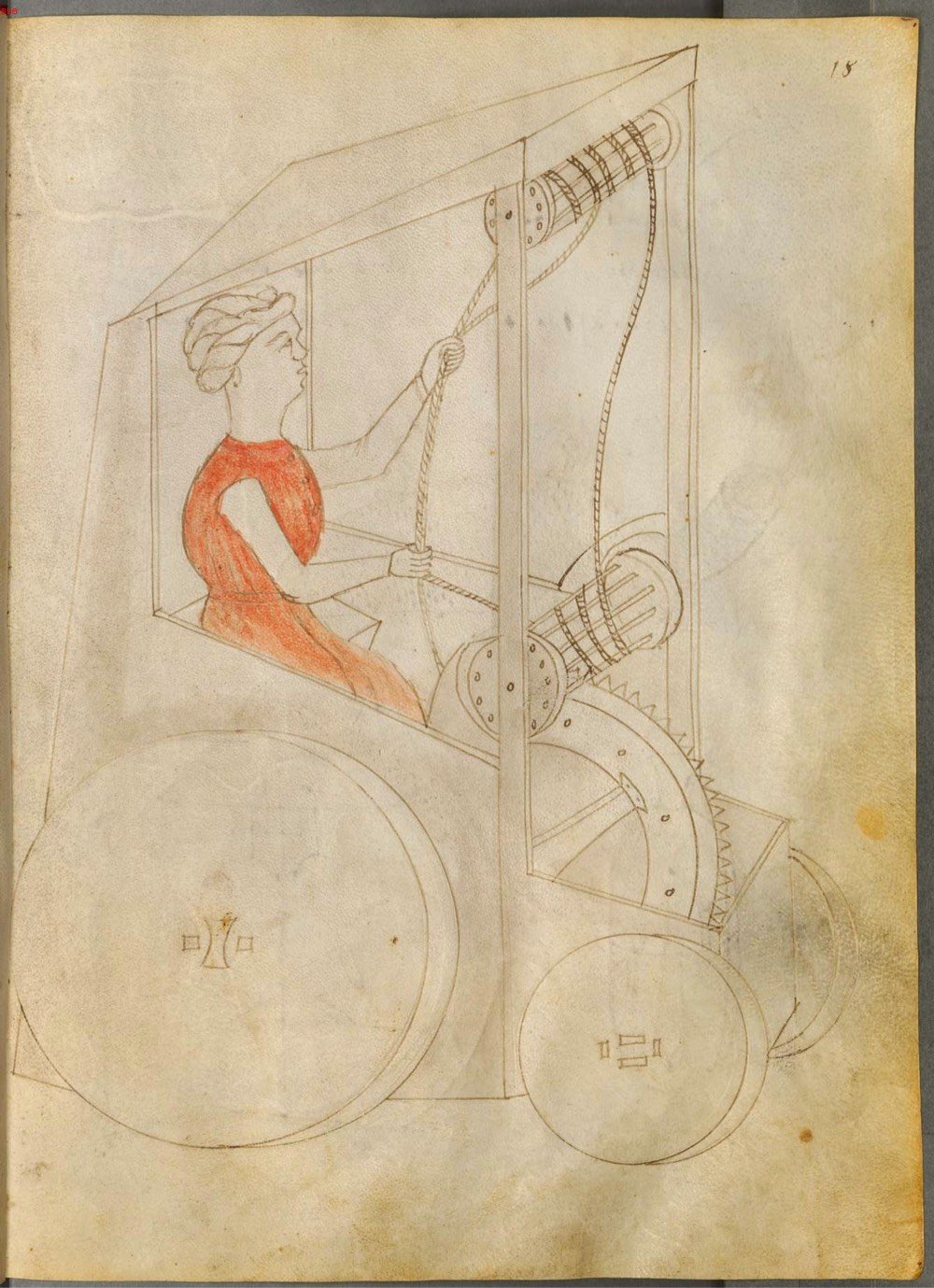The Fantastical Drawings of an Inventive 15th-Century Italian Engineer
Sometime in the early 15th century, an Italian engineer and inventor Johannes de Fontana produced a sketchbook that would later be called the Book of Warfare Devices. Its pages were filled with Fontana’s ideas for all kinds of inventions, projects, and fantastical machines.



Fontana imagined a wide array of projects: mechanical camels for entertaining children, mysterious locks to guard treasure, flame-throwing contraptions to terrorize the defenders of besieged cities, huge fountains, musical instruments, actors’ masks, and many other wonders. One of the most remarkable features of his ideas is that many of them are impossible to execute: they simply do not conform to the principles of mechanics. This gives them great charm and makes them more interesting, perhaps, than his more rational or practical proposals. We see similar impractical designs in the very few other engineers’ books extant from this early period, most notably in the notebooks of Leonardo da Vinci.
When I first saw his work, my mind immediately thought of Leonardo as well, although Fontana’s drawings were less polished and modern than even those of his contemporaries:
The towers and rockets, water and fire, nozzles and pipes, pulleys and ropes, gears and grapples, wheels and beams, and grids and spheres that were an engineer’s occupation at the dawn of the Renaissance fill Fontana’s sketchbook. His way of illustrating his ideas, however, is distinctly medieval, lacking perspective and using a limited array of angles for displaying machine works. He drew according to the methods practiced in the previous century, not those of the Italy of Alberti and Brunelleschi in which he lived. He used liberal splashes of ochre to animate his mechanical monsters and devils with the effects of fire.
You can explore the entire sketchbook here…browsing via thumbnail view is probably easiest. (via open culture)





Stay Connected